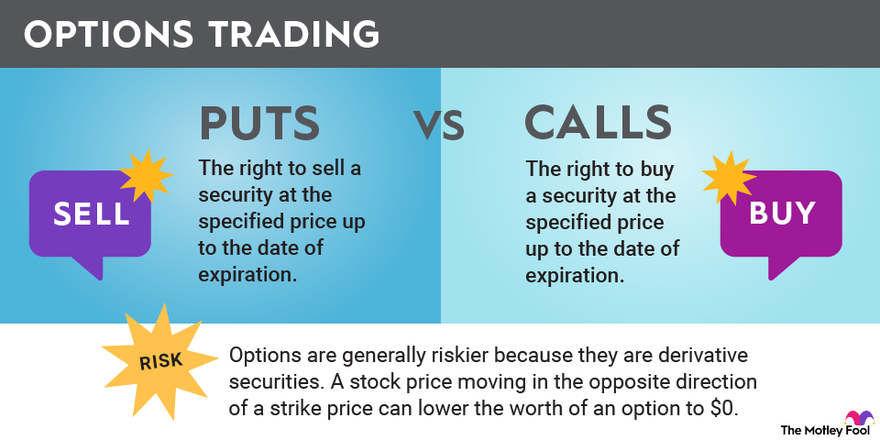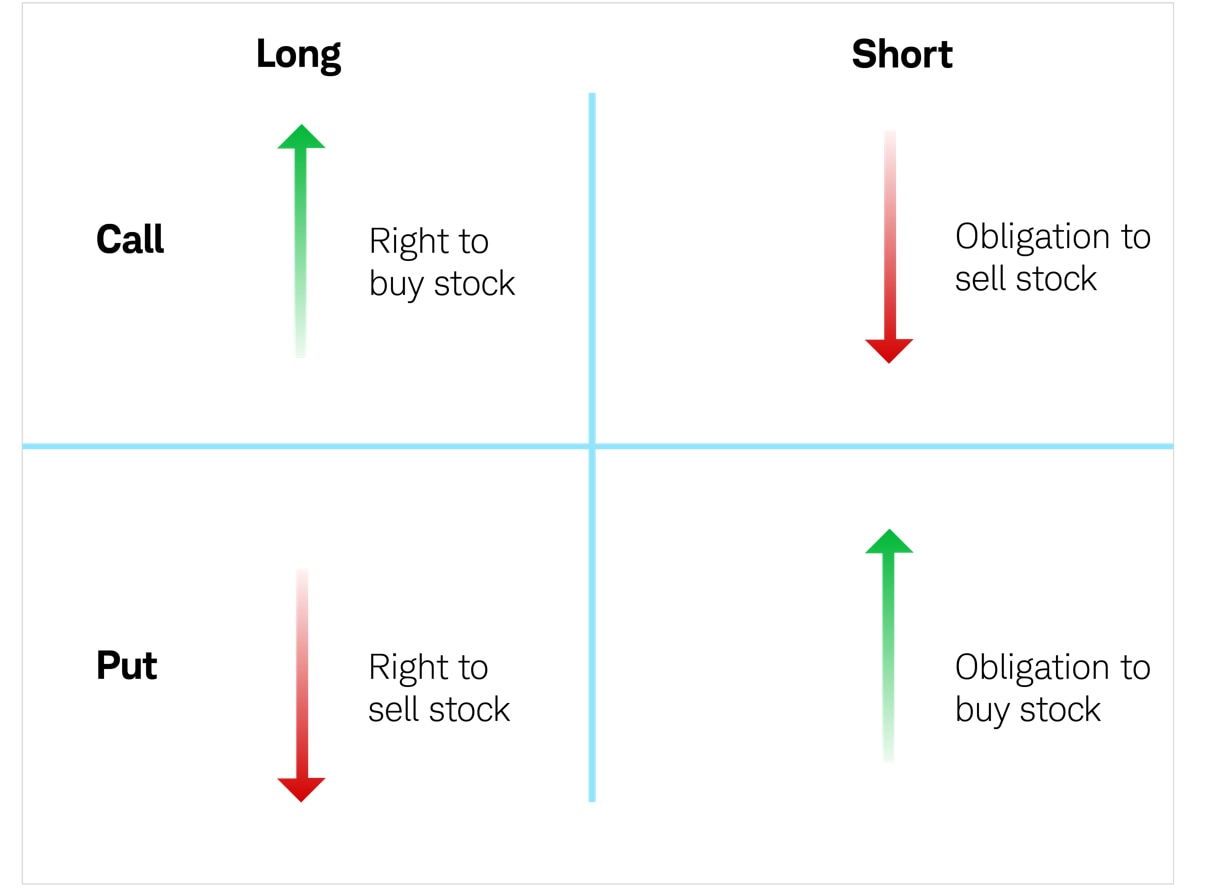The world of finance is vast and complex, presenting a myriad of opportunities and challenges for savvy investors. Among the array of investment strategies, options trading stands out as a powerful tool offering potential rewards. However, success in options trading hinges on the prudent application of robust models. In this comprehensive guide, we embark on a journey to unravel the intricacies of options trading models, exploring their significance and providing invaluable insights to empower your trading decisions.

Image: www.fool.com
Options, inherently versatile financial instruments, grant the holder the right, but not the obligation, to buy (call option) or sell (put option) an underlying asset at a predetermined price (strike price) within a specified period (term). The interplay between these parameters unlocks a spectrum of strategic possibilities, rendering options trading a lucrative yet demanding endeavor.
Delving into Options Trading Models
Options trading models are analytical frameworks employed to assess the potential profitability and risk associated with options strategies. These models leverage mathematical and statistical techniques to project the likelihood of various outcomes, enabling traders to make informed decisions regarding trade execution and portfolio management. There exists a diverse array of options trading models, ranging from basic to highly sophisticated, each tailored to specific trading strategies and market conditions.
Types of Options Trading Models
- Binomial Tree Model: This widely utilized model simulates the path of the underlying asset’s price over discrete time intervals, allowing traders to evaluate the probability of different option payoffs.
- Black-Scholes Model: Developed by Fischer Black and Myron Scholes, this fundamental model assumes a continuous and lognormal distribution of the underlying asset’s price to determine option premiums and implied volatility.
- Monte Carlo Simulation: This technique simulates numerous random paths of the underlying asset’s price to estimate the distribution of possible option payoffs. It is particularly valuable for complex options strategies or when dealing with path-dependent options.
Selecting an Options Trading Model
The judicious selection of an options trading model hinges on several factors, including the complexity of the trading strategy, the underlying asset’s volatility, and the trader’s risk tolerance. No single model universally excels in all scenarios, emphasizing the importance of understanding the strengths and limitations of each model before deployment.
For instance, the binomial tree model is appropriate for valuing short-term, simple options strategies. Conversely, the Black-Scholes model, while widely employed, assumes constant volatility, a condition not always prevalent in real-world markets. Monte Carlo simulations, computationally intensive but highly versatile, offer greater flexibility in modeling complex scenarios and path dependencies.

Image: www.schwab.com
Mastering Options Trading Models
Effective utilization of options trading models necessitates a comprehensive understanding of their underlying principles, assumptions, and limitations. A profound grasp of statistics, probability theory, and financial mathematics is indispensable for deciphering complex strategies.
Practicing with a simulated trading platform or backtesting historical data further enhances proficiency. Analyzing model outputs and understanding the impacts of varying input parameters on option pricing empower traders to optimize their strategies and make judicious adjustments to adapt to market dynamics.
Expert Advice for Navigating Options Trading
- Commence with Fundamental Understanding: Before venturing into options trading, invest time and effort in comprehending the intricacies of the underlying models. Knowledge is power, empowering you to make informed decisions.
- Test and Practice: Familiarize yourself with different options trading models through simulation and backtesting. This invaluable experience enables you to refine your strategies and build confidence in their applicability.
- Diversification and Risk Management: Spread your investments across diverse options strategies and underlying assets to mitigate risks. Employ stop-loss orders to limit potential losses and safeguard your capital.
- Seek Professional Guidance: Consult with experienced financial advisors or mentors who can impart valuable insights, guide your trading decisions, and help you navigate market complexities.
- Stay Informed: The financial markets are constantly evolving, warranting regular monitoring of economic data, news, and market trends. Staying abreast of the latest developments empowers you to adapt your strategies accordingly.
FAQs on Options Trading Models
- Q: Is it essential to be a mathematician to use options trading models?
A: While a basic understanding of mathematics is beneficial, options trading models are designed to be accessible to individuals with varying levels of mathematical proficiency. Nevertheless, dedication to learning the underlying concepts is paramount.
- Q: Can options trading models guarantee success?
A: No model can provide absolute guarantees in the volatile financial markets. However, by employing robust models and adhering to prudent risk management principles, traders can significantly enhance their chances of success.
- Q: What is the optimal frequency for reviewing options trading models?
A: Regular model reviews are essential, particularly during periods of market turbulence or when implementing new strategies. Adapting models to changing market conditions optimizes their accuracy and effectiveness.
Options Trading Model

Image: www.pinterest.com
Conclusion
Options trading models, when employed judiciously, serve as invaluable tools for unlocking the potential of options trading. Understanding the principles, types, and limitations of these models empowers traders to make informed decisions, optimize their strategies, and mitigate risks. By embracing continuous learning, practicing diligently, and seeking expert guidance, you can harness the power of options trading models and navigate the financial markets with confidence.
Are you fascinated by the intricacies of options trading models and eager to delve deeper into their deployment? Share your thoughts, questions, or experiences in the comments section below. Together, we can explore the boundless possibilities of options trading and empower ourselves to conquer the challenges and reap the rewards of this captivating financial endeavor.






